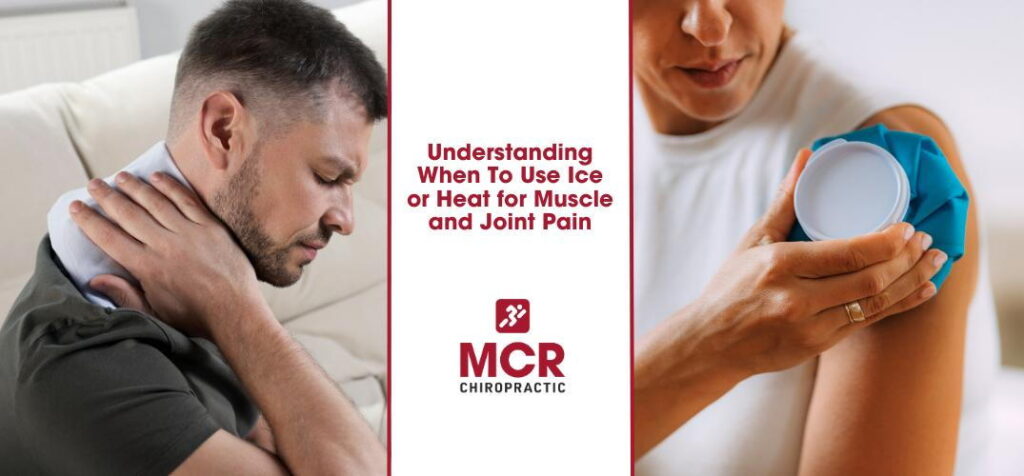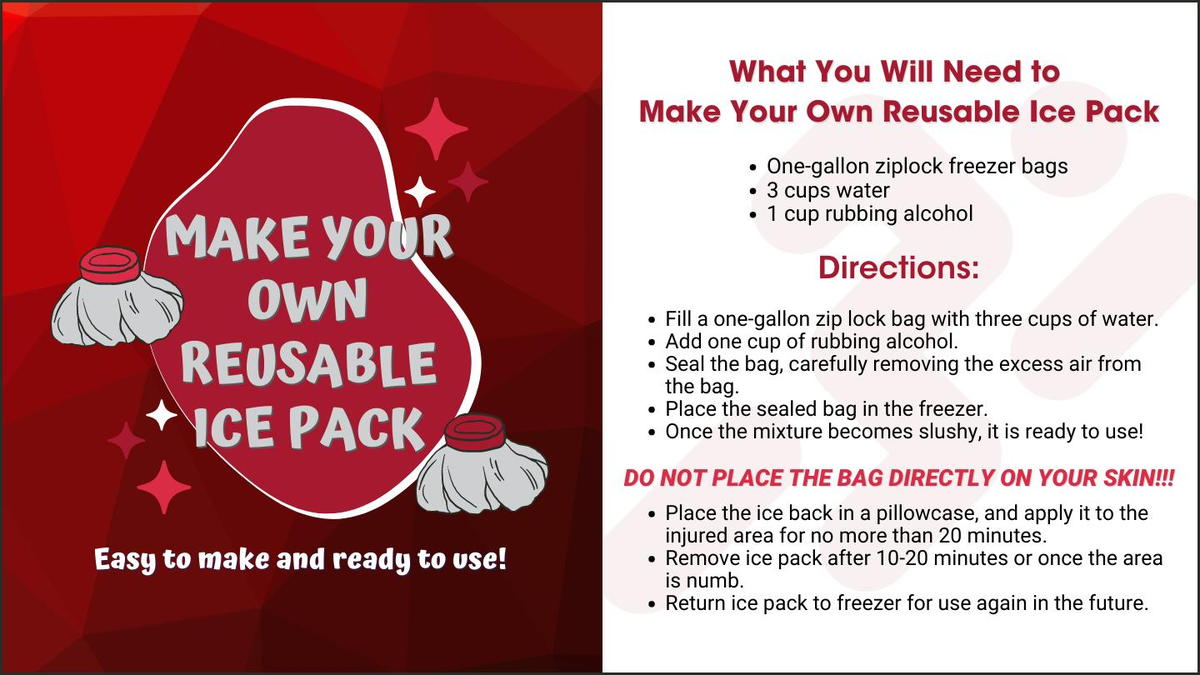Understanding When to Use Ice or Heat for Muscle and Joint Pain

If you are like many people, you’ve experienced muscle aches and pains following rigorous activities or chores. A quick game of pick-up basketball with your teenager, spring-time yard clean-up and gardening, or an intense trip to the gym when you’ve started a new workout plan. Late in the evening or upon waking the following day, your body lets you know, ‘Oh no- that was too much!’ Looking for relief, you grab the heating pad- or is it the ice bag? What will happen if you pick the wrong one?
Chiropractors are highly trained healthcare providers that understand the origins of pain and dysfunction and utilize hands-on care techniques to resolve soft tissue injuries and joint alignment issues. So, when questions arise about preparing for activity or recovering from injuries, we are the perfect partner in your health.

Ice Therapy and Heat Therapy: Which to Use and When
Chiropractors are often asked whether ice or heat should alleviate muscle or joint pain. The answer to this question is not always straightforward, so understanding how each impacts your body is critical. Choosing the right option at the right time can significantly influence your recovery and performance.
The recommendations that follow are general guidelines for most people. However, following specific recommendations based on your situation is crucial if you’ve been diagnosed with a condition such as Multiple Sclerosis (MS) or fibromyalgia. Many conditions and medical diagnoses benefit from a team approach to managing symptoms. So, when new or unusual symptoms present themselves, you must seek the care of your specialists.
Cold Therapy for Reducing Inflammation and Pain
Cold or ice therapy, sometimes called ‘cryotherapy,’ is recommended if you have recently experienced an injury or have swelling in a joint or extremity (for example, your ankle, elbow, or knee). Cold therapy reduces pain by numbing the affected area to minimize nerve sensation. It also reduces swelling and inflammation by constricting blood vessels and circulation to the area.
The best time to use ice therapy is during the first 24-48 hours after an injury, also known as the inflammatory period. This can last up to 72 hours or longer, depending on the severity of the tissue injury. Cold therapy’s pain-relieving and anti-inflammatory impact can deliver a much-needed break if you are in pain following physical exertion or injury. While using gel packs, like the ones in our clinics, is a common ice therapy, gel packs can be dangerous if used too often or for too long.

If your pain does not subside and you need guidance on your next step, talk with your chiropractor at your next visit. Chiropractic is a journey, not a short-term fix for momentary aches and pains. With chiropractic’s holistic approach to health and your chiropractor’s ongoing guidance, you can stay one step ahead of injuries.
Safety Tips for Using Cold Therapy
- Avoid placing your ice pack directly on the skin.
- Do not ice longer than 20 minutes at a time.
- Use a 10-20 minute on, 60-minute off rule of thumb- this allows your tissues time to warm back up thoroughly.
- Avoid ice therapy before physical activity as it can increase stiffness and aggravate symptoms.
Stages of Cold
While the number of minutes is a safe guide for ice application, each individual’s tolerance can vary. So, chiropractors often educate their patients on how to identify the effectiveness of ice based on the four stages of cold therapy:
- Uncomfortable
- Stinging sensation
- Burning or aching
- Numbness (this is the time to take the ice off!)
Heat Therapy for Relaxing Muscle Tissues
Heat therapy, sometimes called ‘thermotherapy,’ is ideal for relaxing and loosening muscles and tissues and relieving stiffness and chronic pain. Heat promotes blood flow to the area, making it an excellent option for chronic conditions like arthritis or overuse injuries. Heat therapy can also be used to loosen and relax muscles before exercise.
How to Use Heat Therapy Safely
To use heat therapy, apply a heating pad or a hot moist towel to the affected area for up to 20 minutes. It’s essential to avoid using heat therapy for extended periods, especially when sleeping. So, no heating pads overnight! Heat therapy benefits soft tissues by increasing blood flow to the area and drawing extra nutrients into the tissues to assist in recovery and healing.
Heat should never be used immediately following an injury or in the 72 hours following an injury; this is the time to use ice. You may benefit from medical care if you are concerned about an injury or your pain has continued longer than 3-4 days. Ask your chiropractor for more guidance and if a consultation with our Bay State Physical Therapy colleagues would be beneficial.
Tips for Using Heat Therapy
- Avoid using heat therapy for prolonged periods.
- Do not use heat therapy while sleeping to prevent burns.
- Heat therapy can exacerbate inflammation; therefore, follow your medical team’s advice if you have an inflammatory condition.
Of course, warming up your muscles can be done the old-fashioned way too. Slow, large muscle activities progressing in speed and complexity are a great way to warm up the body in preparation for vigorous activities.
Maintain Health and Wellness with Chiropractic
If you’re experiencing muscle or joint pain, ice or heat therapy can effectively reduce your symptoms. However, if your symptoms persist, talk with your chiropractor about them and your health goals, and allow them to assess your health issue objectively. This will help ensure your best chance to regain and maintain optimal health.
Call your nearest clinic or schedule an appointment below.
"*" indicates required fields
Sources:
